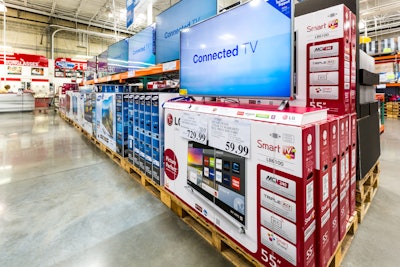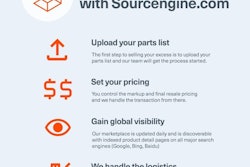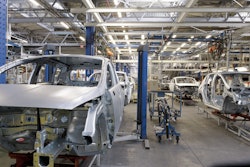
There are five problems that can wreak havoc on an LCD supply chain, including obsolescence, delivery, quality, performance and cost. But, one will often affect you more than the rest, and that’s delivery. Here’s a look at why delivery issues are the most likely to derail your operations, and how to prevent or fix them.
Costing you time, money and reputation
No matter what type of product you’re building, timely delivery of every component is critical, and yet delivery is often an organization’s Achilles heel. The problem is that it doesn’t just affect you in one area; it hits you where it hurts the most. Late, inaccurate or incomplete deliveries can end up costing you financially in terms of loss of sales, late fees, expedited shipping, rework and so forth. But they also waste a lot of time, often holding up production lines and/or your end user and significant resources just spent on managing this.
When this happens, delivery problems deliver their third issue - a giant wrecking ball to your reputation. Even if the blame for a late delivery rests squarely on the shoulders of your vendor, you’ll pay the price because of the impact it has on your business and your customers.
Prevention is the best remedy
As with most problems in business, taking preventive measures is the best line of defense. Here are some ways to be proactive and ensure delivery issues don’t foil a streamlined supply chain.
1. Look for trustworthiness early.
From a vendor’s initial quote, keep your eyes open for signs they’re either deserving of trust or aren’t. For example, what expectations do they set for delivering the quote and for their design process overall? Did they estimate a reasonable time frame, and does it work with your production or launch schedule? Most importantly, do they meet the deadlines?
The same standards hold true throughout the design and tooling process: is the vendor reasonable, clear and timely in delivering designs and prototypes? All these steps demonstrate how reliable they’ll be for delivery in production.
2. Tune in to communication.
From the get-go, pay attention to how a vendor interacts with you. Do they give you ample notice of
any potential delays so you can plan around them? Even though problems aren’t ideal, a solid partner will keep you in the loop and help ease the strain of such a burden however they can.
Furthermore, what caused a given problem? Was it external factors, or something within the vendor’s control? If it’s the latter, listen to how they explain the issues. Do they take accountability and share how they’ll avoid such an outcome next time? Or do they blame other people or make excuses? Integrity matters.
3. What are their contingency plans?
Every supplier you work with should have detailed, comprehensive plans in place for when the unforeseen happens. Their goal should be creating the maximum product availability insurance for you, which means keeping extra products or sub-components in stock, having expedited shipping options at their disposal when needed, and even going the additional step of second-sourcing the most critical components in case their normal source fails.
They should also plan for a disrupted supply chain, due to positive reasons. For example, what if business is booming and your volume suddenly and exponentially increases? Or what if you need to double your order for one month, but not permanently? While these are ultimately good “problems,” you still need to ensure ahead of time that your vendor can be flexible and responsive enough to solve them should they crop up.
Supply chain is like a river
Think of your operations like a river. When the water is low, all the rocks are exposed and become hazardous. Then, when it rains upstream, the water level rises and flow smoothly over the rocks. A dangerous, bumpy ride on the rapids turns into stable, steady progress. In terms of delivery, the “rocks” are obstacles and gaps in the supply pipeline. Adding extra inventory and flexible shipping options raises the water level upstream and smooths out the flow of the supply chain. Good communication helps you steer a course around any big rocks you still see in the river.
The “water level” is the amount of inventory you have available for your assembly line. Raising the water to the right level starts with the supplier having a robust supply chain of their own. It depends on their production capacity and schedule, where you fall in their priority scale, their ability to physically get the parts to you and their ability to hold safety stock. You need to take all these factors into account when you do resource planning.
There are five problems that can greatly impact your supply chain, but delivery often tops the list. The good news is that building a strong relationship with a proven, trustworthy and agile supplier can go a long way in keeping deliveries on track, the supply chain optimized and your own business in excellent standing.
















